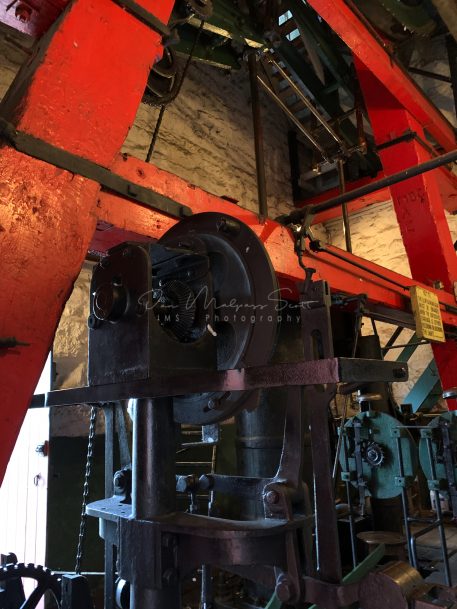![]()
The winding engine, Beamish Museum, Co.Durham
The winding engine was the source of power for hauling miners, equipment and coal up and down the shaft in a cage, the top of the shaft being in the adjacent heapstead, which encloses the frame holding the wheel around which the hoist cable travels. Inside the Heapstead, tubs of coal from the shaft were weighed on a weighbridge, then tipped onto jigging screens, which sifted the solid lumps from small particles and dust – these were then sent along the picking belt, where pickers, often women, elderly or disabled people or young boys (i.e. workers incapable of mining), would separate out unwanted stone, wood and rubbish. Finally, the coal was tipped onto waiting railway wagons below, while the unwanted waste sent to the adjacent heap by an external conveyor.
Chophill Colliery was closed by the National Coal Board in 1962, but the winding engine and tower were left in place. When the site was later leased, Beamish founder Frank Atkinson intervened to have both spot listed to prevent their demolition. After a protracted and difficult process to gain the necessary permissions to move a listed structure, the tower and engine were eventually relocated to the museum, work being completed in 1976. The winding engine itself is the only surviving example of the type which was once common, and was still in use at Chophill upon its closure. It was built in 1855 by J&G Joicey of Newcastle, to an 1800 design by Phineas Crowther
![]()


